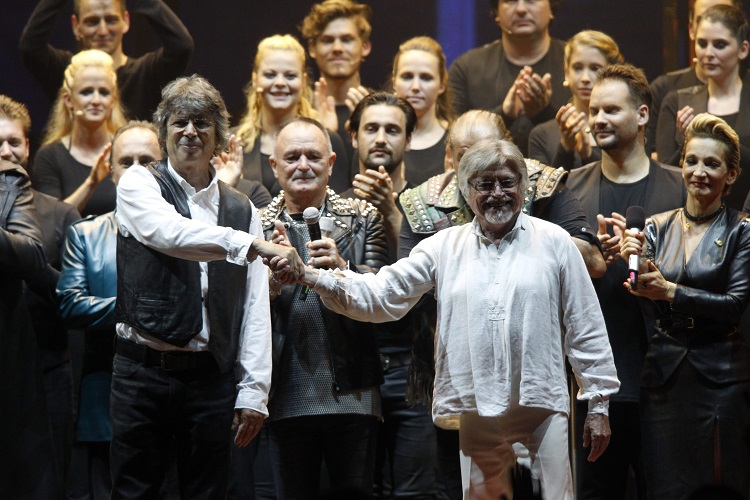A one-and-a-half-hour experience theater, involving the audience, three stages, a children's choir and a dance troupe await the spectators István, a király on August 19 at the Budapest Sportarena.
"The question is not István or Koppány, because the audience has already decided that István and Koppány. This bipolarity is a unique source of energy that we can be really proud of, and it's time to understand this," said Péter Novák, the director of the show, at the production's press conference on Thursday.
The most successful domestic rock opera of all time was written by Levente Szörényi and János Bródy and was presented on Királydomb in 1983. In the current arrangement, King István is represented by Balázs Koltai-Nagy, Sarolt by Judit Schell, Gizella by Juli Horányi, Gergő Koppány by Baricz, Ágnes Rékát by Herczku, Leander Köteles by Tordát, Ákos Asztrikot Orosz, János Vecelint by Kardos-Horváth, Richard Laborcot by Borbély, the lords Márton Pallag, Krisztik Csaba and Máté Andrássy, and Sámán is played by a woman, Sena Dagadu, with the permission of the authors.
Producer Mária Rosta said at the event that they are trying to make one of the most interesting and certainly the biggest performances of the past forty years. "In the 2,000-square-meter Arena, we will play on a 1,000-square-meter stage," added Mária Rosta. The Hungarian State Opera Children's Choir, a 120-member dance troupe and a six-member rock band take part in the production.
Péter Novák spoke about how István, the King is one of the most influential pieces of Hungarian musical theater, a part of our national collective consciousness, which everyone is curious about, regardless of their ideological systems.
"For the first performance on August 19, all tickets were sold as we sold István and Koppány tickets, and people bought both. The audience will be the protagonist of the performance, there will be joint singing, while the events take place in three locations, the István stage, the Koppány stage, and a sacred space in the middle. The participation of the hundred and twenty folk dancers is a tribute to the 1983 presentation, the former legendary Dance Meetings, and also to my father, Ferenc Novák," explained the director.
According to Levente Szörényi, the composer of István, the King, forty years ago, at the premiere of the rock opera, they did not think about what kind of success story the piece would become. "When we mixed the recording in the Törökbálint studio in the summer of 1983, I was a bit distraught. I felt that maybe what we did was not that good, but it seems I was wrong".
Lyricist János Bródy recalled: after the performance at Káryáldombi, many people thought that a fantastic piece had been created. "A little resignedly, I said then, if in thirty years they still remember it, then I believe that we worked well. Well, it's already been forty years."
According to Levente Szörényi, something was really hit, even though the play only contains templates that seem like eternal truths. "The cooperation between the music and the text brought about the fact that everyone finds in it what suits their own world, and these thoughts and feelings are merged in the end by the Anthem".
"The play shows that we all have István and Koppány in us, which is an incredible resource for Hungarian culture, and in the end everyone feels that this is how we are Hungarians together," added János Bródy.
The costumes for the performance were designed by Juli Horányi, the set designer was Kázmér Tóth, the musical directors were Kati Károly and Péter Brucker, and the dramaturg was Gábor Bányai.
Source: Retro Radio/MTI
Featured image: MTI













